Understanding What ABA Parent Training Entails
Parent training in Applied Behavior Analysis (ABA) is a vital component in supporting children with autism spectrum disorder. It equips caregivers with practical tools, strategies, and knowledge to reinforce therapy goals at home, promoting consistency and speeding up positive developmental outcomes. This article explores what parents can expect from ABA training, its core components, techniques, evaluation methods, and tips for selecting quality programs.
Fundamental Goals and Benefits of ABA Parent Training
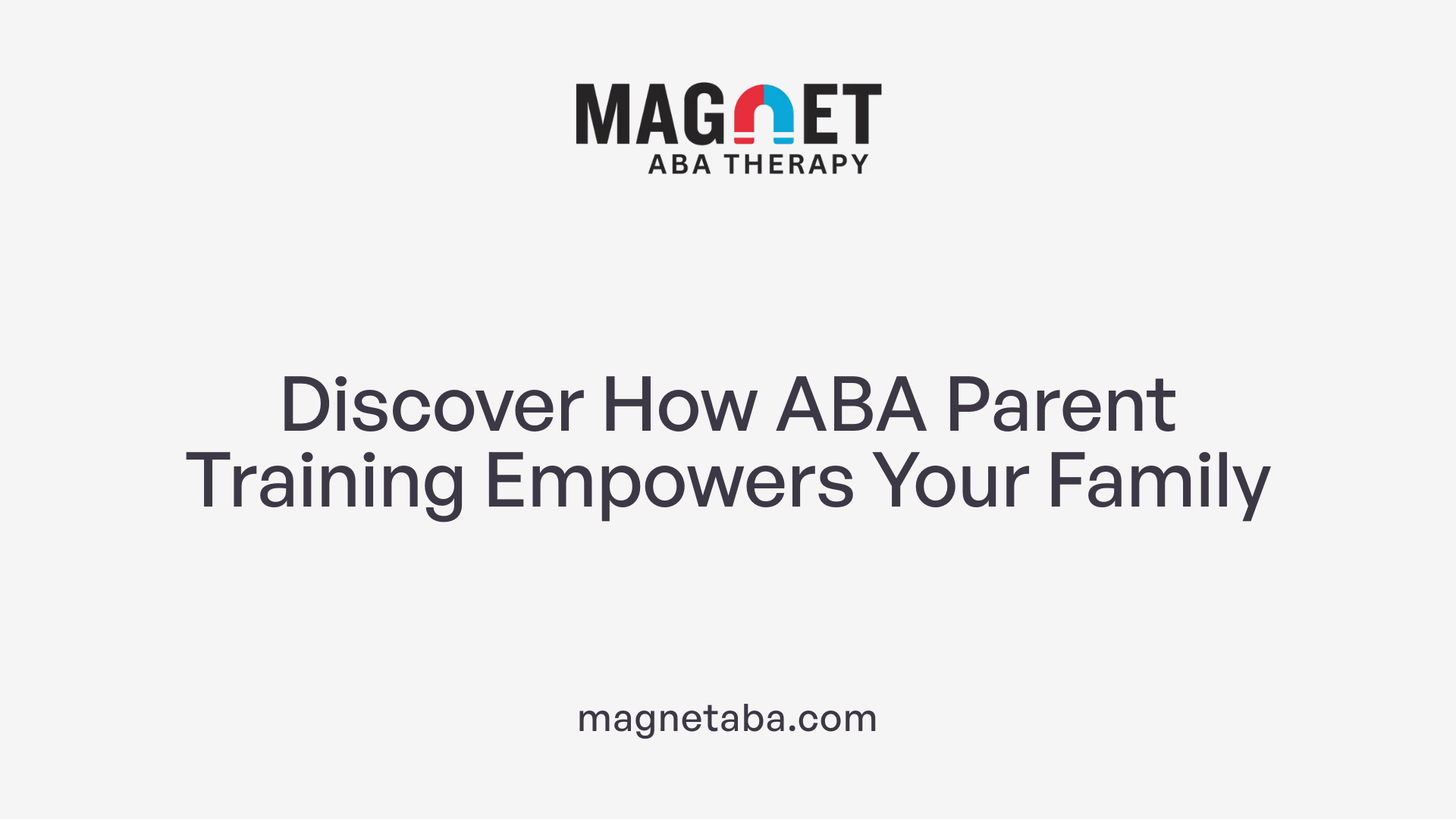
What are the goals and benefits of participating in ABA parent training?
Participating in ABA parent training is designed to equip parents with the practical skills needed to support their child's development and manage behaviors more effectively. One primary goal is to teach parents how to implement specific ABA strategies at home, such as positive reinforcement, prompting, and shaping, which are essential for reinforcing therapy goals outside of clinical sessions.
Another key aim is to help parents understand the function of their child's behaviors. This understanding allows them to respond calmly and consistently, which can reduce challenging behaviors like aggression or self-injury. The training also emphasizes setting realistic, measurable goals that parents can work toward and adjust over time, ensuring progress keeps on track.
The benefits of ABA parent training extend beyond behavior management. Parents often report increased confidence in their parenting abilities and a clearer understanding of their child's needs. This fosters better communication and strengthens the parent-child relationship.
Moreover, structured training supports the generalization of skills, meaning children can use what they learn across different settings such as home, school, and community. It also encourages a collaborative partnership between parents and therapists, which enhances consistency and accelerates progress.
Long-term, parent training can lead to reduced family stress by providing caregivers with effective tools to manage daily routines and address behavioral issues proactively. As a result, children tend to show improved adaptive behaviors, increased independence, and overall better functioning.
In essence, ABA parent training not only aims to improve specific behaviors but also enhances the overall family dynamic, paving the way for meaningful, lasting change that benefits both children and their families.
Core Components of ABA Parent Training
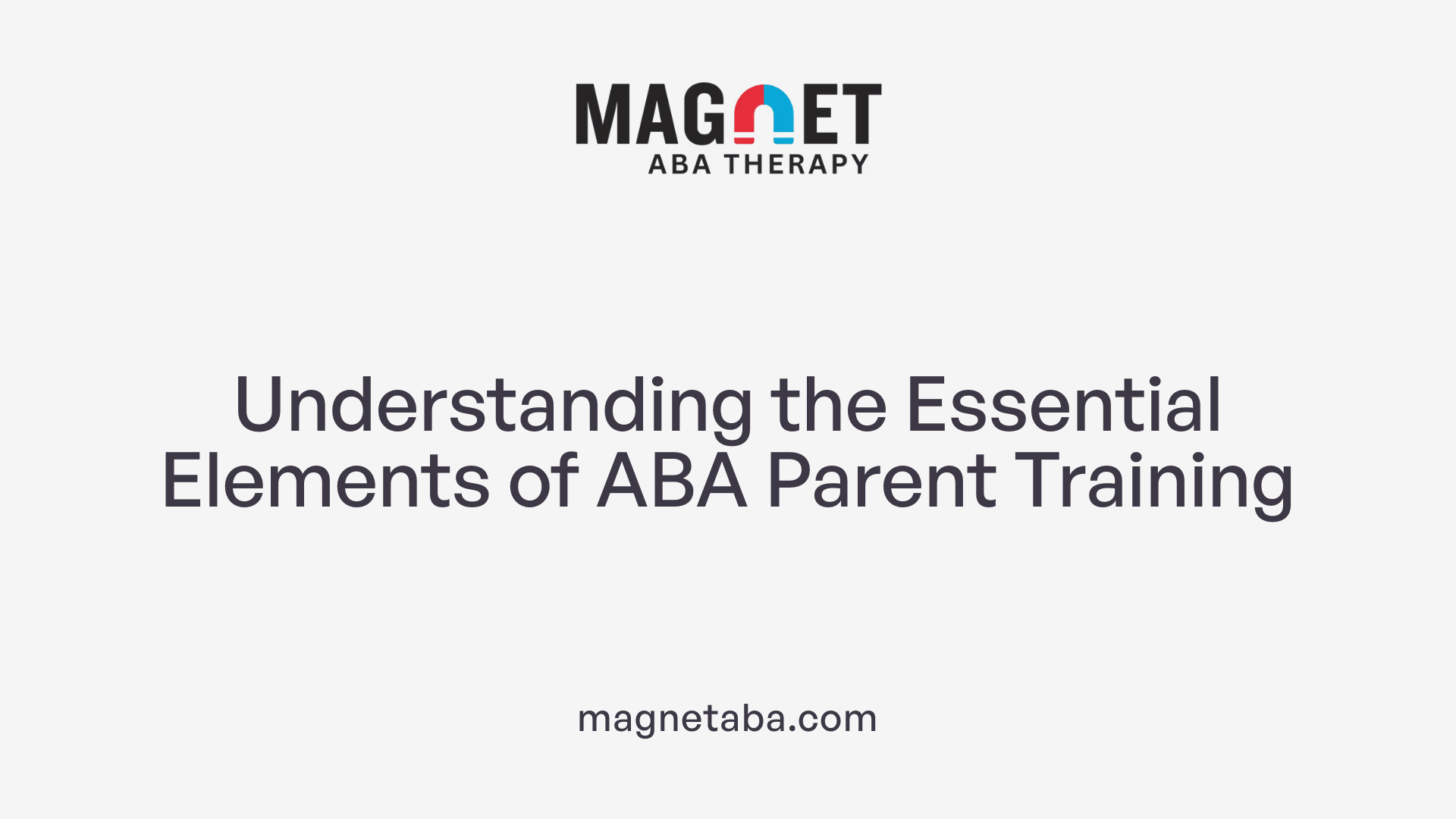
What are the core components of ABA parent training?
ABA parent training provides caregivers with essential skills and strategies to reinforce therapy goals beyond clinical settings. At its heart, this training covers several components designed to promote consistent, effective support.
One key element is teaching reinforcement strategies. Parents learn how to identify and provide motivating reinforcers that encourage desirable behaviors, such as praise, tokens, or access to preferred items. Reinforcement helps increase target behaviors and build positive routines at home.
Prompting techniques are another vital part of training. Parents are taught how to guide their child’s responses through prompts, gradually fading them over time to foster independence. This includes physical prompts, visual cues, or verbal directions, tailored to the child's needs.
Shaping behaviors involves breaking down complex skills into smaller, achievable steps. Caregivers learn how to reinforce successive approximations, gradually guiding children toward the desired behavior or skill.
Visual supports and routine establishment are emphasized to enhance understanding and predictability. Visual schedules, timers, and visual cues help children anticipate daily activities, reducing anxiety and promoting cooperation.
Goal setting and skill generalization are also central to effective parent training. Parents are encouraged to set small, measurable goals aligned with their child's developmental needs. Regular check-ins and data collection help track progress and adjust strategies as necessary.
Furthermore, role-playing and modeling during training sessions solidify parents' skills, boosting their confidence. These practical techniques ensure that learned strategies are applied correctly and consistently across different environments.
In summary, comprehensive ABA parent training equips caregivers with practical tools—such as reinforcement, prompting, shaping, visual supports, and goal setting—to support their child's development effectively. This collaborative approach encourages the generalization of skills beyond therapy sessions, improves family dynamics, and accelerates progress toward greater independence.
Techniques and Strategies Used in Parent Training
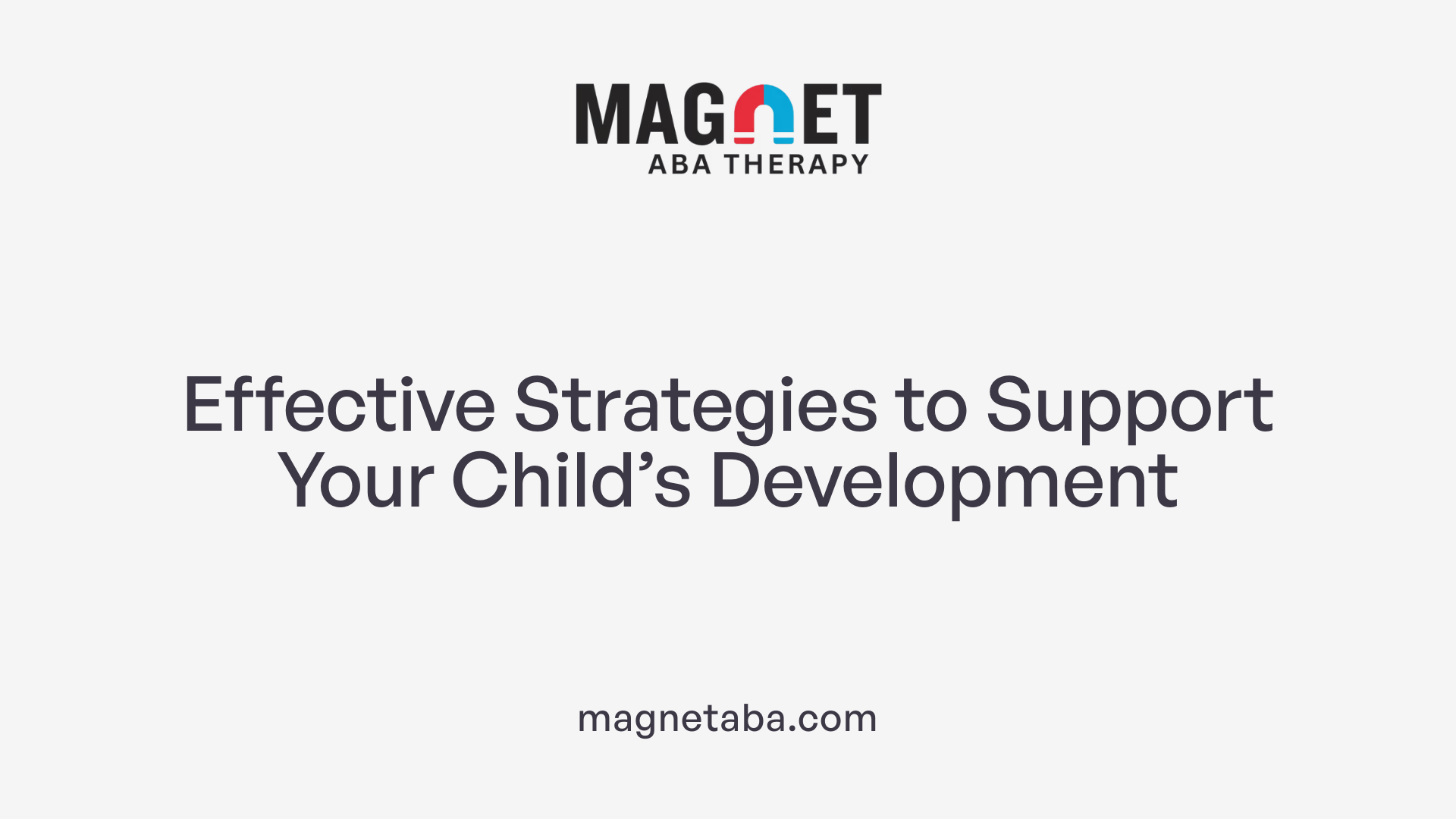
What techniques and strategies are used in ABA parent training?
ABA parent training incorporates a variety of methods designed to help caregivers effectively support their child's development. One of the main techniques is positive reinforcement, where parents learn to praise and reward desirable behaviors to encourage their recurrence. This approach emphasizes the importance of identifying available reinforcers and using them consistently.
Modeling, role-playing, and giving feedback are also fundamental components. Therapists demonstrate behaviors for parents to imitate, then observe and correct their techniques through guided practice. These interactive methods build parental confidence and ensure proper implementation.
Structured routines and visual aids serve as practical tools. Visual schedules help children anticipate daily activities, reducing anxiety and meltdowns. Consistent routines create predictability, which supports learning and behavioral regulation.
Behavioral Skills Training (BST) is a cornerstone of effective parent education. It involves teaching through instruction, modeling, rehearsal, and feedback. Parents practice new skills in simulated settings, receive immediate feedback, and refine their techniques over multiple sessions.
Managing challenging behaviors, such as aggression or self-injury, requires targeted strategies. Parents are trained to identify triggers, respond calmly, and implement consistent consequences. Techniques like response cost, time-out, or teaching alternative communication help decrease problematic behaviors.
Combining these strategies ensures a comprehensive approach. This empowers parents to modify behavior proactively, establish positive routines, and foster a supportive environment that promotes their child's growth.
| Strategy | Description | Application Example |
|---|---|---|
| Positive Reinforcement | Reward attention or activity to increase desirable behaviors | Giving a toy for waiting patiently |
| Modeling and Role-Playing | Demonstrating desired behaviors through practice sessions | Parents practicing giving praise during sessions |
| Visual Supports | Using pictures or schedules to guide daily activities | Visual timetable for morning routines |
| Behavioral Skills Training | Instruction, demonstration, rehearsal, feedback | Parents practicing prompting techniques |
| Challenging Behavior Management | Calm, consistent responses to problematic behaviors | Implementing a time-out for aggression |
Research by Bearss et al. (2015) supports these methods, showing that parent training yields significant reductions in challenging behaviors, up to 47.7%. The combination of evidence-based techniques helps parents foster positive change while reducing stress and improving family functioning.
What to Expect During Training Sessions
 During ABA parent training sessions, parents can look forward to a structured and interactive experience. These sessions typically include instruction, demonstrations, and role-playing exercises designed to build confidence and practical skills.
During ABA parent training sessions, parents can look forward to a structured and interactive experience. These sessions typically include instruction, demonstrations, and role-playing exercises designed to build confidence and practical skills.
Parents are introduced to effective ABA strategies such as positive reinforcement, prompting, shaping, and visual supports. They have opportunities to practice these techniques through hands-on activities, which help translate theory into real-world application.
A significant component of the training involves learning how to respond calmly and consistently to challenging behaviors. This is essential for maintaining a supportive environment and ensuring that behavior interventions are effective. During sessions, parents are also taught how to identify triggers for difficult behaviors and respond appropriately to prevent escalation.
Collaboration is a vital part of the process. Parents receive ongoing feedback from ABA professionals, such as BCBAs, who guide them on how to refine their techniques. This collaborative approach ensures that strategies are tailored to the child's specific needs and family routines.
In addition, planning discussions help parents schedule consistent routines and reinforcement methods. By engaging in role-plays and practical exercises, parents become more adept at reinforcing skills, promoting generalization across settings, and supporting their child's progress.
Overall, these training sessions aim to empower caregivers, enhance communication, and reduce family stress. Parents leave with a clearer understanding of ABA principles and the confidence needed to implement strategies effectively at home and in the community.
Measuring Progress and Adjusting Strategies

How is progress measured and evaluated in ABA parent training?
Assessing progress in ABA parent training involves a combination of systematic data collection, observation, and regular review of behavior changes. Parents and therapists set clear, small goals that are specific, measurable, and achievable, such as increasing eye contact or reducing tantrums.
Data collection methods include tracking frequency, duration, and intensity of target behaviors. For example, recording how often a child initiates communication or displays challenging behaviors provides concrete evidence of change.
Alongside quantitative data, qualitative observations—like parent reports and video recordings—offer valuable insights into the child's overall functioning and skill generalization.
Regularly analyzing this information helps identify trends, such as steady improvement or plateaus, guiding necessary adjustments in strategies. For instance, if a behavior isn't decreasing as expected, the therapist might modify reinforcement schedules or introduce new teaching techniques.
Setting small, attainable goals keeps families motivated and focused. Celebrating milestones, like successfully transitioning between activities or communicating needs effectively, reinforces progress.
This dynamic process ensures that interventions remain personalized and effective, adapting to the child's evolving needs and maximizing learning and development.
| Method | Purpose | Details |
|---|---|---|
| Data recording | Quantify behavior change | Frequency, duration, and type of behaviors documented |
| Observation and assessment | Qualitative understanding of progress | Video recordings, parent logs, direct therapist observation |
| Trend analysis | Track patterns over time | Identify whether behaviors are improving, stabilizing, or worsening |
| Goal setting | Guide intervention focus | Small, clear, achievable objectives |
| Regular reviews | Adjust strategies as necessary | Monthly or quarterly meetings to update plans |
Overall, combining data-driven insights with ongoing observations allows for tailored, responsive interventions that support lasting progress in children and strengthen caregiver confidence.
Practical Tips for Success in ABA Parenting

Consistency in applying strategies
One of the most important factors in successful ABA parenting is consistency. Parents should stick to the routines, reinforcement schedules, and behavior management techniques they learn during training sessions. Consistent application helps children understand expectations and solidifies new skills, which accelerates progress.
Seeking clarification and feedback
No parent is expected to master ABA techniques immediately. It’s vital to ask the therapists for clarification whenever a technique or strategy isn’t clear. Regular feedback from the BCBA or ABA provider ensures strategies are correctly implemented and tailored to the child's evolving needs. This ongoing communication reduces errors and builds confidence.
Practicing skills at home
Reinforcing ABA skills outside of therapy sessions is crucial. Parents should dedicate time to practice learned techniques, such as prompting, reinforcement, and prompting fading, in everyday situations. Using role-playing and real-life practice helps children generalize skills across different environments, making behaviors more stable and reliable.
Maintaining collaboration with therapists
Strong collaboration with ABA therapists and educators fosters a unified approach. Attending scheduled meetings, sharing observations, and discussing progress help refine strategies. This teamwork ensures that interventions are consistent and adapt as needed, supporting the child's development more effectively.
Tracking progress
Keeping detailed records of behavior changes and skill acquisition is essential. Using data charts or logs allows parents to see patterns over time, identify triggers or challenges, and determine whether strategies are effective. Regularly reviewing this data with the therapist helps in adjusting goals and techniques, leading to better outcomes.
| Tip | Practical Action | Expected Outcome |
|---|---|---|
| Consistency | Follow routines and reinforcement plans | Faster skill acquisition and behavior stability |
| Clarification | Ask questions regularly | Correct technique application |
| Practice at Home | Role-play and apply strategies daily | Generalized skills across environments |
| Collaborate | Share observations, attend meetings | Coordinated interventions |
| Track Progress | Maintain data logs | Informed modifications and goal setting |
Implementing these practical strategies creates a supportive environment where children can thrive, and parents feel empowered to play an active role in their child's development.
How to Find Quality ABA Parent Training Programs
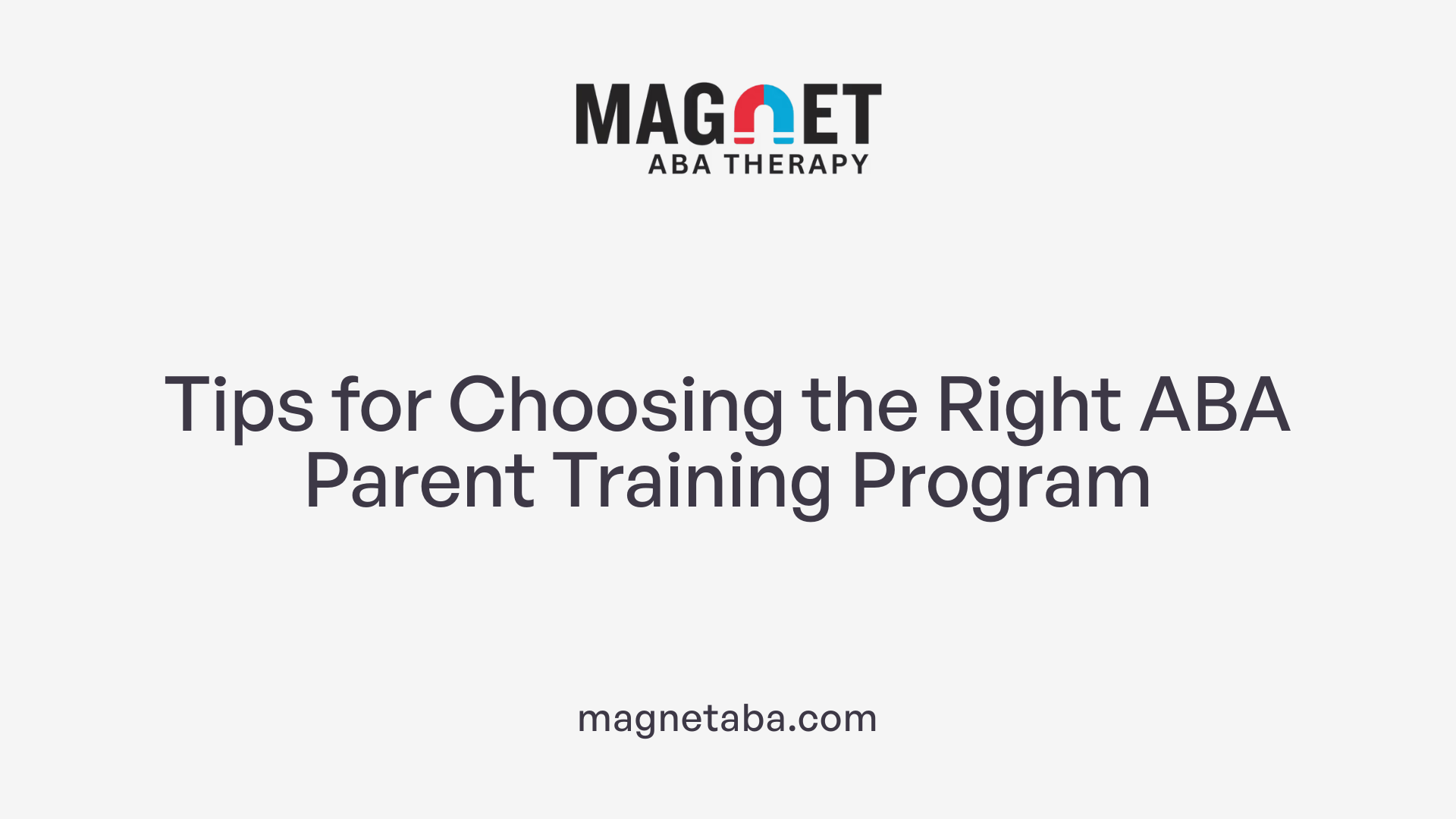 Choosing the right ABA parent training program is essential for supporting your child's development effectively. Parents should start by identifying programs that are accredited by reputable organizations, such as the Behavior Analysis Certification Board (BACB). Accreditation ensures the program follows established standards of quality and evidence-based practices.
Choosing the right ABA parent training program is essential for supporting your child's development effectively. Parents should start by identifying programs that are accredited by reputable organizations, such as the Behavior Analysis Certification Board (BACB). Accreditation ensures the program follows established standards of quality and evidence-based practices.
Consulting healthcare providers or licensed behavior analysts can be highly beneficial. They can recommend programs that are tailored to your child's specific needs and ensure the training aligns with proven ABA methods, such as positive reinforcement, visual supports, and behavior management strategies.
When evaluating potential programs, look for those that offer a structured curriculum, like the ACHIEVE Parent Training Curriculum, which includes comprehensive lessons and homework assignments. Ongoing support, regular check-ins, and collaboration with trained professionals are crucial for reinforcing learning and troubleshooting challenges.
Reading reviews and testimonials from other parents can provide valuable insights into the program’s effectiveness, ease of implementation, and the level of support provided. Positive feedback often indicates a program's ability to engage families and produce meaningful improvements.
In summary, selecting a quality ABA parent training program involves ensuring accreditation, consulting experts for guidance, prioritizing structured and personalized approaches, and reviewing feedback from other families. This ensures you choose a program that builds your confidence and empowers you to effectively support your child's growth.
Long-term Impact and Family Benefits of ABA Parent Training
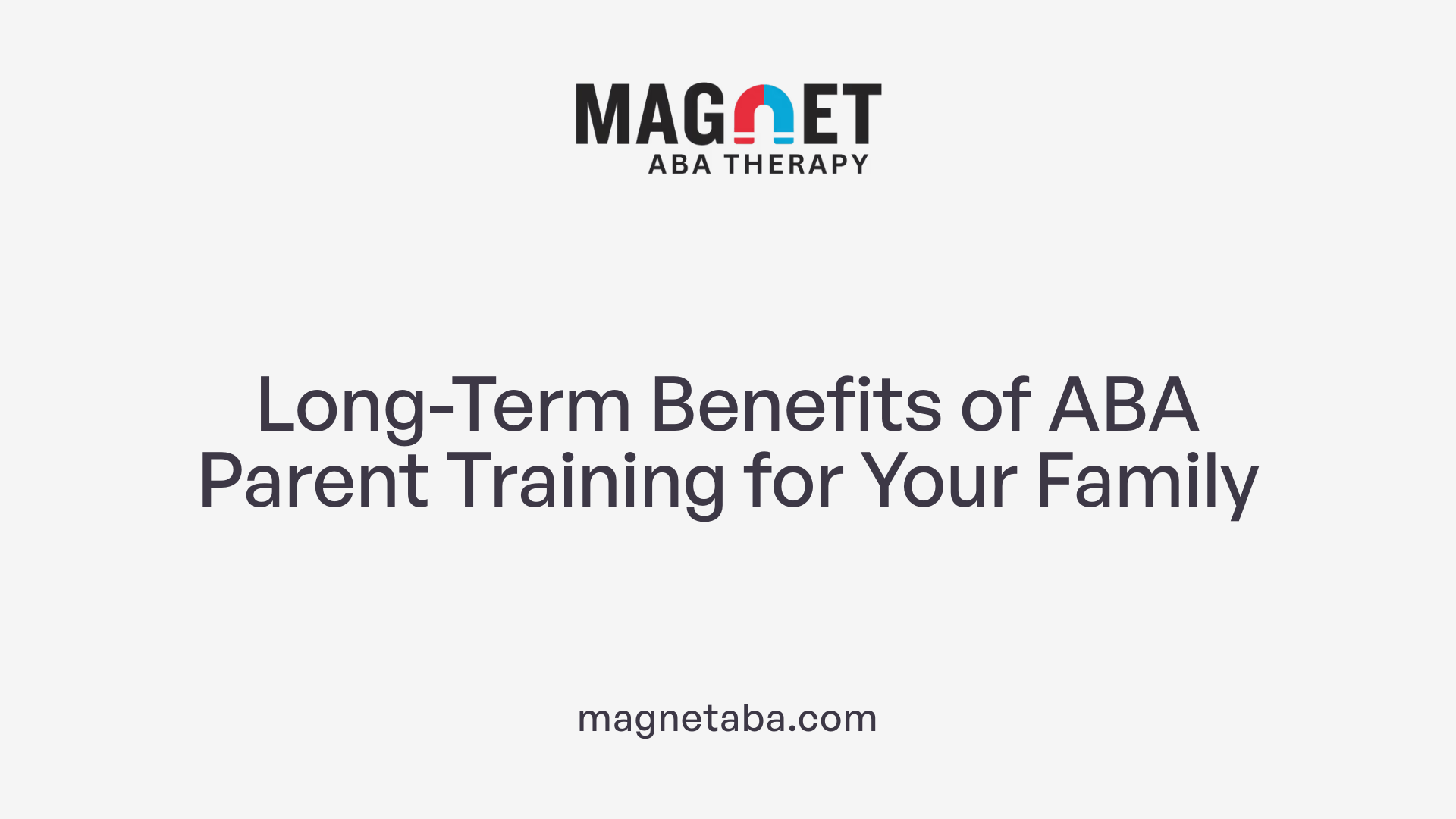
What are the long-term benefits of ABA parent training?
ABA parent training offers significant benefits that can extend well beyond immediate therapy goals. One of the most notable advantages is the encouragement of sustained skill development in children. When parents are equipped with effective ABA strategies, they can help their children acquire and maintain essential skills such as communication, social interaction, and daily living, fostering greater independence over time.
This training also plays a crucial role in strengthening family dynamics. As parents learn to better understand behavior patterns and apply consistent reinforcement techniques, communication within the family improves. This shared understanding reduces conflicts and builds a supportive environment where everyone works together towards common developmental goals.
Moreover, children tend to benefit from increased independence, which can lead to greater success in community settings like school and social environments. Properly trained parents can generalize and sustain learned behaviors across different contexts, ensuring that progress is maintained outside of therapy sessions.
An additional long-term benefit lies in the potential reduction of therapy duration. Early parent involvement through structured training can accelerate progress, possibly shortening the overall length of intensive interventions. This not only reduces the emotional and financial stress on families but also improves their quality of life.
In sum, the enduring advantages of ABA parent training include faster skill acquisition, better family cohesion, increased independence for children, and a more efficient use of therapy resources. These outcomes highlight the importance of investing in comprehensive parent training early on, to lay a solid foundation for lifelong growth and harmony within the family.
A Supportive Path Forward in Autism Care
ABA parent training is a structured, collaborative process that equips caregivers with essential skills to support their child's development effectively. From understanding core principles and engaging in practical techniques to ongoing evaluation and support, parents can expect to gain confidence and competence in managing behaviors, promoting skill generalization, and strengthening family bonds. Choosing a reputable program and maintaining consistent practice are key to maximizing benefits. Ultimately, well-implemented parent training lays a vital foundation for long-term success, fostering independence, resilience, and a more positive family environment.
References
- The Ultimate Guide to Parent Training in ABA
- ABA Parent Training: The Complete Guide To Helping ... - Master ABA
- Parent Training in Applied Behavior Analysis Treatment
- Help Your Clients Get the Most Out of ABA Parent Training - Relias
- ABA Parent Training: Tips and Strategies for Parents
- Parent Training in ABA Therapy - Supporting Family Success
- Parent Training in ABA & Its Importance - Mindful Sprouts
- Mastering Parent Training in ABA: A Comprehensive Guide











